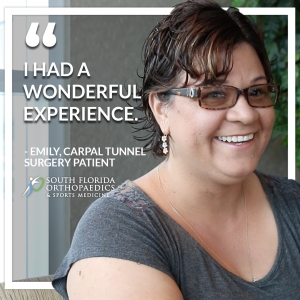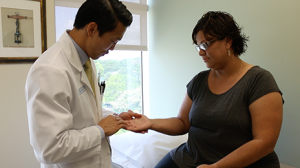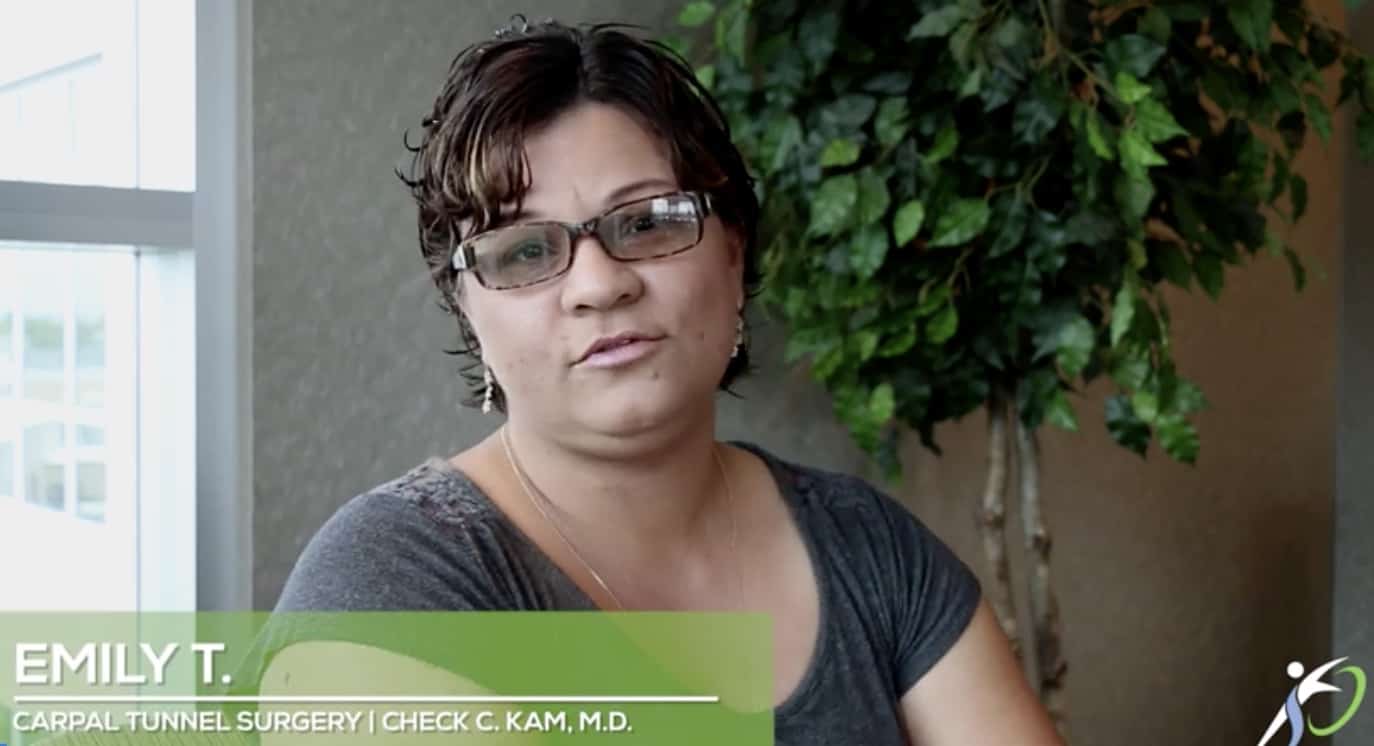- What is Carpal Tunnel Syndrome?
- What Are the Benefits of Wide-Awake Surgery for Carpal Tunnel?
- How Is Wide-Awake Carpal Tunnel Surgery Performed?
- What Can You Expect After Wide-Awake Carpal Tunnel Surgery?
Many hand surgery procedures, including carpal tunnel surgery, can now be performed under local anesthesia in the clinic setting, without the need for sedation or general anesthesia.
Carpal tunnel syndrome is one of the more common nerve disorders people experience during their lifetime. Luckily, it’s very treatable and even better, some patients don’t even have to be put under to have the procedure. With advances in pain management and modern technology, patients can be awake during carpal tunnel surgery.What is Carpal Tunnel Syndrome?The carpal tunnel is a narrow passageway on the palm side of the wrist made up of bones and ligaments. The median nerve and a few tendons run from the forearm to the hand through the carpal tunnel. The median nerve controls some thumb movement and feeling in all fingers except the pinky.

Carpal tunnel syndrome occurs when the median nerve is pinched or compressed, and the condition is characterized by feelings of numbness, tingling, weakness or pain in the hand. The onset of symptoms is generally slow as patients are most likely to first experience discomfort during the night or when they first wake up. Symptoms tend to progressively worsen over time. They may also feel pain or tingling when holding objects or when driving.
Emily, a recent patient at South Florida Orthopaedics & Sports Medicine, experienced carpal tunnel syndrome in both of her hands. Based on her previous treatment experiences at the practice, she sought care from Check C. Kam, MD, FAAOS, a board-certified orthopaedic surgeon specializing in surgery of the upper extremities.
“I’ve had great results so far in everything I’ve done at South Florida,” she says.
When Emily found herself unable to perform her normal daily activities despite trying more conservative methods, Dr. Kam suggested surgery as the best treatment option for her.
“Emily’s symptoms were severe and refractory to splint treatment. After a long discussion about potential treatments, she elected to have a release,” Dr. Kam said.What Are the Benefits of Wide-Awake Surgery for Carpal Tunnel?The demand for wide-awake surgery is increasing because it is a more convenient option than traditional surgery under general anesthesia. The procedure involves local anesthesia and, possibly, no tourniquet at all.
The main benefits of wide-awake surgery for carpal tunnel treatment versus the traditional full anesthesia procedure include:
- There is no sedation, which increases patient comfort and convenience (especially for older patients)
- Not using sedation or anesthesia helps to reduce overall treatment time
- During a wide-awake procedure the patient can participate by flexing and showing range of motion, which can help the surgeon better determine what is needed and ultimately improve outcomes.
- Reduced overall treatment times lead to reduced costs. Twice as many carpal tunnel release surgeries can be performed in the same amount of time at 25% of the cost of a regular surgery
Dr. Kam suggested Emily consider the benefits of having her surgery done while conscious. In fact, Dr. Kam is one of the few advocates for the wide-awake carpal tunnel release surgery, and prefers using local anesthesia to keep patients awake if the patient chooses.
“The best amount of anesthesia is no anesthesia at all,” says Dr. Kam. “At first, Emily was scared by the concept of having the surgery wide-awake, but she eventually chose to go for it and was very pleased with how it turned out.”How Is Wide-Awake Carpal Tunnel Surgery Performed?

Wide-awake carpal tunnel release surgery is typically performed as an outpatient procedure, meaning patients go home later the same day. The orthopaedic surgeon cuts the transverse carpal ligament, which releases pressure on the median nerve and relieves the symptoms. The incision is made through the base of the hand, and once the ligament is cut the skin is stitched closed.
The pain associated with wide-awake carpal tunnel release surgery is minimal, and patients can expect to feel a bit of discomfort for just a few seconds when the local anesthetic is injected. Also, patients don’t actually watch the procedure, because the surgeon operates behind a cloth divider.
It is important to note patients, although awake and participating throughout the procedure, do not watch the surgery as the surgeon is still separated by a partition.
“I was wide awake and I had a wonderful experience,” explains Emily. “If you could do something and not have to ‘go under’, then why not?”What Can You Expect After Wide-Awake Carpal Tunnel Surgery?After carpal tunnel release surgery, the ligaments gradually fuse back together and leave more room for the nerve than existed before. Patients can expect to experience some soreness or weakness for the first few weeks following the procedure. They should notify their surgeon as soon as possible if they experience prolonged feelings of tingling, numbness or weakness.
Orthopaedic surgeons encourage patients to use their hand as much as possible while avoiding extreme wrist positions or forceful hand motions. Wrist and hand rehabilitation can play an important role in helping patients rebuild range of motion, strength, and grip.
It wasn’t long before Emily started feeling better and was able to get back to her normal routine pain-free.
“I can open doors, now I can open water bottles, basically anything now,” she says with a smile. “I think my carpal tunnel surgery is the best surgery I’ve ever had,” she laughs. “And I’ve had (both) neck and shoulder surgery.”
